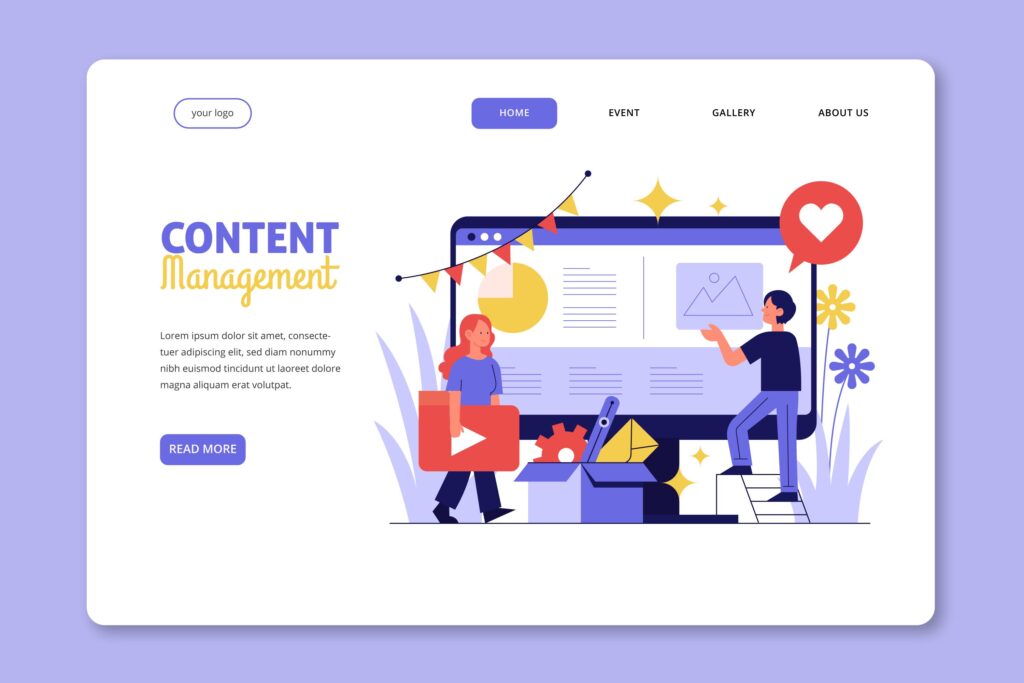Content Marketing
Engage and Convert with High-Quality Content
We create and distribute valuable, relevant, and consistent content to attract and retain a clearly defined audience. Our content strategies are designed to support your link building efforts and enhance your overall digital presence.

Engage and Convert with High-Quality Content
Engage and Convert with High-Quality Content
Creating high-quality content is one of the most effective ways to engage your audience, build trust, and ultimately convert visitors into loyal customers. Content that resonates with your audience not only informs but also guides them toward taking action, whether it’s signing up for your newsletter, making a purchase, or sharing your content.
To truly engage and convert, your content needs to be valuable, well-crafted, and strategically designed to lead users down the path of conversion. Here’s how to create content that engages and drives results:
1. Know Your Audience
The foundation of high-quality content is a deep understanding of your audience. You must know their pain points, preferences, questions, and goals. Creating content without knowing your target audience is like shooting arrows in the dark—it may miss the mark.
How to do it:
- Create buyer personas: Outline key demographic information, behaviors, and challenges your audience faces.
- Analyze user data: Use analytics tools (Google Analytics, social media insights, surveys) to gather information on what your audience engages with.
- Monitor competitors: See what types of content are working for your competitors and what gaps you can fill with your own content.
2. Provide Value and Solve Problems
People consume content primarily to solve problems or gain new insights. For your content to be engaging and valuable, it must address a specific need or provide a solution. Whether it’s in the form of how-to guides, tutorials, case studies, or industry insights, make sure your content answers the “What’s in it for me?” question.
How to do it:
- Focus on pain points: Identify the common challenges your audience faces and create content that helps them overcome these obstacles.
- Offer practical solutions: Provide actionable advice that your audience can implement right away.
- Back it up with data: Use statistics, case studies, and real-world examples to reinforce your points and build credibility.
3. Craft Compelling Headlines
Your headline is the first (and often only) chance to grab your audience’s attention. A compelling headline entices readers to click, whether on social media, search engines, or your website. If your headline doesn’t stand out, your content may go unnoticed, no matter how valuable it is.
How to do it:
- Use numbers or lists: Titles with numbers (e.g., “5 Tips for…”) are more clickable because they promise specific, digestible information.
- Create curiosity: Use intriguing headlines that make people want to learn more (e.g., “The One Mistake You’re Making in Your Marketing”).
- Include keywords: Make sure your headline is optimized for SEO by including relevant keywords while still sounding natural.
4. Make Content Visually Appealing
Humans are visual creatures. Incorporating visuals such as images, infographics, videos, and other multimedia into your content can make it more engaging and easier to consume. Studies show that content with visuals gets more attention, more shares, and can even improve retention.
How to do it:
- Use high-quality images and graphics: Always use professional, relevant visuals that complement your content.
- Infographics: These can simplify complex information and are highly shareable.
- Videos: Videos can increase engagement and time spent on your page, and they’re excellent for demonstrating products or explaining concepts.
- Break up text with headings and bullet points: This makes your content easier to read and scan.
5. Tell Stories to Build Emotional Connections
People don’t just engage with content—they engage with stories. Storytelling humanizes your brand, creating emotional connections that resonate with your audience. When people connect with a brand on an emotional level, they’re more likely to take action and convert.
How to do it:
- Use customer success stories: Share testimonials, case studies, or personal experiences to demonstrate how your product or service has positively impacted others.
- Incorporate personal stories: If appropriate, include your own experiences or those of your team to make your brand more relatable.
- Create a narrative arc: Present challenges, solutions, and results in a way that guides the reader through a compelling journey.
6. Optimize for SEO Without Sacrificing Quality
While the primary goal of content is to engage and convert, it also needs to be discoverable. SEO (Search Engine Optimization) ensures your content appears in search results when people are looking for solutions to their problems. However, don’t sacrifice quality just to include keywords.
How to do it:
- Do keyword research: Identify the right keywords that resonate with your audience’s search intent. Tools like Google Keyword Planner, Ahrefs, or SEMrush can help.
- Use keywords naturally: Integrate keywords into your content in a natural, reader-friendly way. Avoid keyword stuffing.
- Optimize for featured snippets: Structure your content to answer specific questions directly to increase your chances of being featured in the Google snippet box.
- Improve user experience: Fast load times, mobile optimization, and clear navigation all play a role in SEO.
7. Incorporate Clear Calls to Action (CTAs)
Engagement and conversions happen when you guide your audience to the next step. Whether it’s downloading a resource, signing up for a newsletter, or making a purchase, your content should include a clear and compelling call to action (CTA).
How to do it:
- Be direct: Use action-oriented language like “Download,” “Start Free Trial,” or “Learn More.”
- Place CTAs strategically: Position CTAs where they are most likely to be noticed—at the end of the post, in the middle, or in a floating widget on the page.
- Offer incentives: Encourage action by offering something in return, like a discount, free resource, or exclusive access.
- Make the process simple: Ensure that the action you want the audience to take is easy to complete, with minimal friction or barriers.
8. Leverage Social Proof and Testimonials
People trust other people. Using social proof, such as customer testimonials, reviews, or user-generated content, can significantly increase the credibility of your content and boost conversions. Social proof provides reassurance to potential customers that your product, service, or brand is worth their investment.
How to do it:
- Include testimonials: Feature quotes or stories from satisfied customers directly in your content or on landing pages.
- Showcase user-generated content: Encourage your users to share their experiences through social media posts, photos, or reviews, and then feature that content on your site.
- Highlight case studies: Demonstrate how your product or service has solved real problems for others in your target audience.
9. Be Consistent and Post Regularly
Consistency is key to engagement and conversion. Regularly posting high-quality content keeps your audience engaged and coming back for more. It also helps build trust and loyalty over time, making them more likely to convert when the time is right.
How to do it:
- Create a content calendar: Plan and schedule your posts to ensure regular, consistent content delivery.
- Repurpose content: Turn successful blog posts into infographics, videos, or social media posts to keep the content fresh and visible.
- Monitor engagement: Track the performance of your content to see which topics or formats resonate most with your audience, and adjust your strategy accordingly.
10. Analyze and Optimize for Conversions
To continuously improve your content’s ability to engage and convert, it’s essential to measure and optimize its performance. Use analytics tools to track key metrics and test different strategies.
How to do it:
- Monitor conversion rates: Use Google Analytics or other tools to track how well your content is converting. Identify which pages or content types lead to the most conversions.
- A/B testing: Experiment with different CTAs, headlines, formats, and visuals to see which ones perform best.
- Iterate based on feedback: Continuously refine your content strategy based on data, user feedback, and performance metrics.
Final Thoughts
High-quality content is the cornerstone of any successful online strategy. By creating content that resonates with your audience, providing value, and guiding them through a well-designed conversion funnel, you can engage your readers and turn them into loyal customers. The key is to focus on solving problems, delivering consistent value, and ensuring that your content is optimized for both user experience and SEO. When done right, high-quality content doesn’t just engage—it converts.

